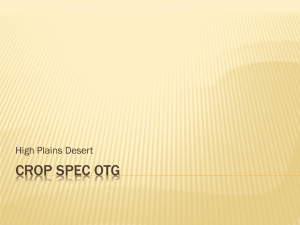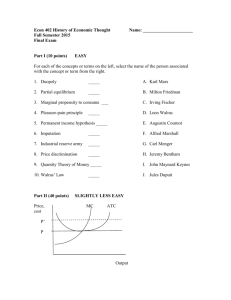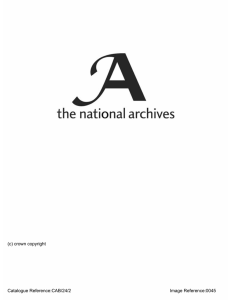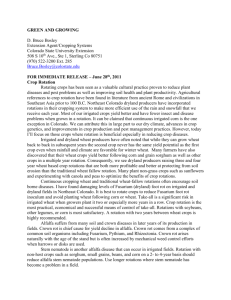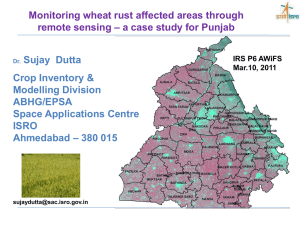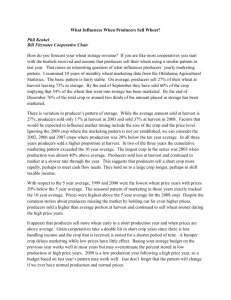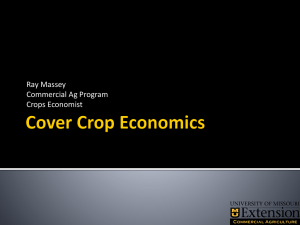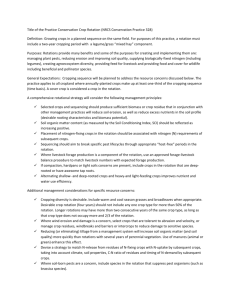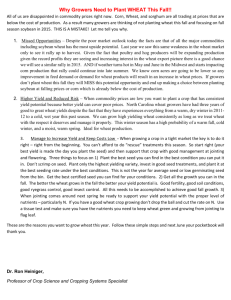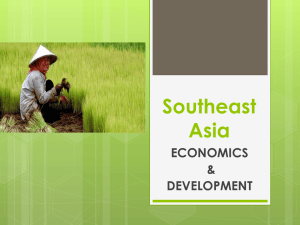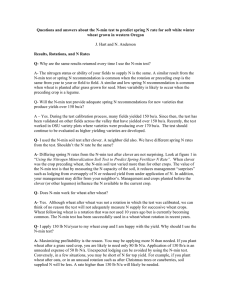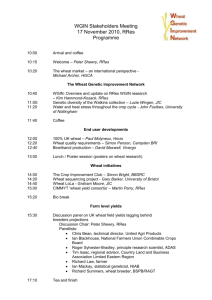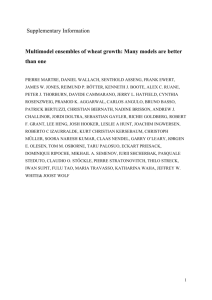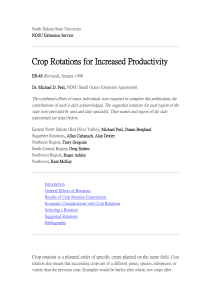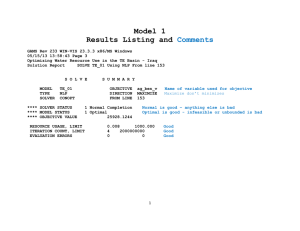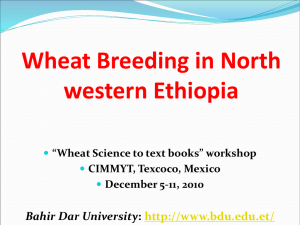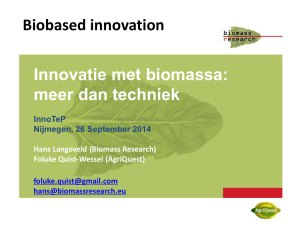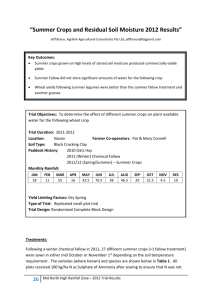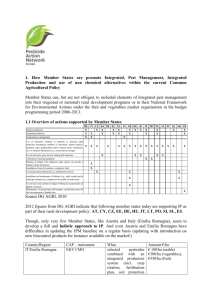CAFRE Development Service
advertisement
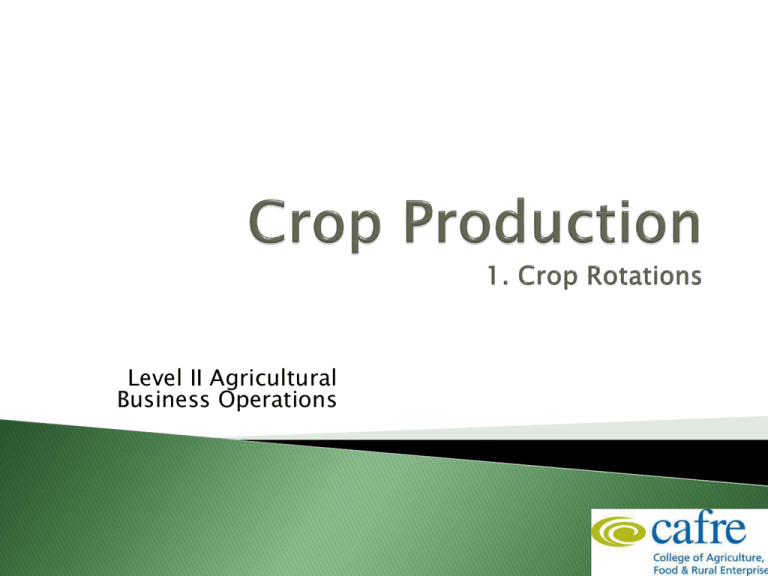
Level II Agricultural Business Operations What is a crop rotation? ........ is the practice of growing a series of different types of crops in the same area in sequential seasons.......... Developed by Charles “Turnip” Townshend in 18th Century Based on Wheat, Turnips, Barley, Clover Benefits ◦ ◦ ◦ ◦ ◦ ◦ ◦ Nutrients Organic matter Pest Control Disease control Optimum use of land Incorporate organic manures Spread workload Disadvantages ◦ Soil Structure ◦ Machinery Requirements Wheat after Break crop vs Wheat after Wheat Choice of crop and variety Management of crop Marketing of crop Is there a demand? ◦ Price / Profitability ◦ Ease of marketing Is your land and climate suitable? ◦ Soil type ◦ Temperature, sunlight, precipitation Do you have / can you plant a suitable mix of crops for a suitable rotation? ◦ E.g. WOSR could be difficult without WB Do you have the labour? ◦ interest ◦ expertise ◦ seasonality of demand for labour Do you have the machinery and buildings? ◦ ownership ◦ access Is it in demand? Yes Is it high quality? Variety dependent. Is it high-yielding? Variety dependent. Does it require a high chemical input? ◦ disease resistance ◦ pest resistance ◦ competitiveness against weeds Site ◦ location (near/far) ◦ soil type (light/heavy) ◦ surrounding crops (e.g. maincrop potatoes/early potatoes) Place in rotation ◦ diseases and pests ◦ soil fertility and structure ◦ timeliness Seedbed preparation ◦ ◦ ◦ ◦ pH cultivations tilth compaction Sowing ◦ date ◦ rate ◦ depth Seed rate, ok! Date, depth, tilth, compaction? Fertilisers Nutrient Management Planning ◦ Major Nutrients eg. N, P, K ◦ Micronutrients ◦ Use of organic manures ◦ Yield & Profitability ◦ Cost/benefit ◦ Soil type ◦ Previous cropping ◦ Timing Weed control ◦ ◦ ◦ ◦ ◦ ◦ ◦ field History competitiveness of crop/weeds sowing date vs seed rate previous cropping cultivations mechanical weeding Herbicide mode of action Disease control ◦ Improve crop condition ◦ Varietal resistance ◦ Order of rotation ◦ Reducing need for chemical treatment Wheat after Wheat? Wheat after Maize? Wheat after Barley? OSR after Cabbage? Volunteer Potatoes? Wheat after Wheat? Take All Wheat after Maize? Fusarium Wheat after Barley? Take All OSR after Cabbage? Club Root Volunteer Potatoes? Blight Pest control ◦ ◦ ◦ ◦ ◦ ◦ soil type previous cropping weather crop growth and development pest populations chemicals (seed treatments, sprays, environment) Rotation allows better utilisation of resources ◦ Labour ◦ Machinery ◦ Drying ◦ Storage Spreading risk Meeting Specification ◦ ◦ ◦ ◦ moisture content storage duration end user facilities Storage ◦ price ◦ facilities Contracts ◦ ◦ ◦ ◦ ◦ quantity quality environmental standards minimum price bonuses Open market ◦ price volatility Options ◦ insurance against price volatility Pool marketing ◦ delegation of marketing decisions Choice of crop and variety ◦ Choose crop and variety to suit farm conditions ◦ Chose crop to make best use of resources Management of Crop ◦ Plan rotation to reduce pests, weeds & diseases ◦ Plan rotation to maximise nutritional benefit Marketing of Crop ◦ Choose crops with a ready market ◦ Choose crops which spread risk ◦ Use local / speciality markets

